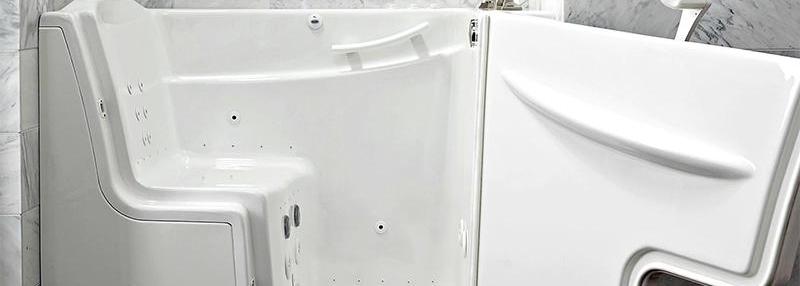Headaches and tension are more than just annoying—they can interfere with daily life and productivity. Thankfully, certain exercises can help ease the pain and discomfort. These affordable, simple, and effective activities target the root causes of many headaches, including muscle tightness and poor posture. Let’s explore five exercises that can provide relief and improve overall well-being.
Advertisement
1. Neck Stretches to Release Tension
Neck tension is a common trigger for headaches, especially in people who spend long hours at a desk or looking at screens. Stiffness and muscle tightness in the neck can create a chain reaction, leading to tension headaches. One of the most effective ways to relieve this pain is through gentle neck stretches.
To begin, sit or stand upright with your shoulders relaxed. Slowly tilt your head to one side, bringing your ear toward your shoulder. Hold the position for 20-30 seconds, then repeat on the other side. For an added stretch, gently use your hand to apply slight pressure on the opposite side of your head. This move helps to release tension in the upper trapezius and the muscles surrounding the neck.
Regularly incorporating neck stretches into your routine can prevent stiffness from building up and help keep tension headaches at bay. These exercises require no equipment and can be done anywhere, making them an affordable option for those looking for headache relief.

2. Shoulder Shrugs to Ease Tightness
Tension in the shoulders is another leading cause of headache discomfort. Whether you’re carrying stress or sitting in a poor posture, tight shoulders can contribute to headaches. Fortunately, shoulder shrugs are an easy and effective way to alleviate this strain.
To perform shoulder shrugs, sit or stand tall with your arms by your sides. Inhale as you raise your shoulders toward your ears, hold for a few seconds, and then exhale as you release them back down. Repeat this movement 10-15 times. This exercise helps to relax the trapezius muscles, which often hold tension and lead to headaches when contracted for prolonged periods.
By performing shoulder shrugs regularly, you can improve shoulder mobility and reduce the frequency of tension headaches. It’s a simple yet powerful exercise that can be performed during short breaks throughout your day.
Advertisement
3. Child’s Pose to Relax the Body
Yoga is well-known for its ability to reduce stress, and one of the best yoga poses for tension relief is Child’s Pose. This gentle stretch calms the nervous system while stretching the back, shoulders, and neck. By incorporating Child’s Pose into your routine, you can significantly reduce headache symptoms associated with muscle tension.
To perform Child’s Pose, kneel on the floor with your big toes touching and knees apart. Lower your torso towards the ground, extending your arms in front of you and placing your forehead on the floor. Focus on breathing deeply as you hold the position for 30-60 seconds. The gentle stretch targets the back and shoulders, helping to release tight muscles that can contribute to headaches.
This pose is a great way to reset your body after a long day or stressful events, promoting overall relaxation. As a low-impact exercise, it is suitable for individuals of all fitness levels.
4. Forehead and Temples Massage
A simple yet effective way to combat tension headaches is through massage. A forehead and temple massage targets the muscles in the head, face, and neck, which can relieve the pain of a headache caused by tightness or stress. While this isn’t a traditional exercise, it’s an affordable and accessible method that can provide immediate relief.
To perform a forehead and temple massage, use your fingertips to apply gentle pressure to the area between your eyebrows. Then, move your fingers outwards to the temples and massage in small, circular motions. Focus on areas of tightness or discomfort, and breathe deeply to enhance relaxation. You can do this for about 5 minutes as needed.
This form of self-care can help break the cycle of headache pain, especially if you feel the headache coming on during a busy or stressful moment. Incorporating this technique into your daily routine can also reduce the frequency of headaches over time.

5. Deep Breathing and Relaxation Techniques
Stress is one of the biggest contributors to both tension and migraine headaches. By learning how to manage stress through deep breathing exercises, you can alleviate the physical symptoms associated with stress-related headaches. Breathing exercises help activate the parasympathetic nervous system, which promotes relaxation and reduces the intensity of pain.
One simple technique to try is diaphragmatic breathing, or belly breathing. Sit or lie down in a comfortable position, placing one hand on your chest and the other on your abdomen. Take a deep breath through your nose, allowing your abdomen to rise as you inhale. Slowly exhale through your mouth, letting the tension melt away. Repeat for 5-10 minutes.
Deep breathing exercises can be easily incorporated into your daily life. Whether you’re at home, in the office, or on the go, taking a few moments to practice deep breathing can reduce stress and prevent the onset of tension headaches.
Advertisement
Final Thoughts
Headaches and tension don’t have to take over your life. By incorporating these simple, affordable exercises into your routine, you can significantly reduce the frequency and intensity of headaches. From neck stretches to deep breathing techniques, these exercises target the root causes of headache discomfort and promote overall relaxation. Remember that consistency is key—taking the time each day to relieve muscle tension and stress will not only help with headache relief but also improve your overall well-being.
References
- “Headaches and Muscle Tension: Causes, Symptoms, and Treatment,” American Migraine Foundation, accessed January 9, 2025, https://americanmigrainefoundation.org/.
- David S. Goldstein, Headache Relief: The Role of Exercise and Stretching (New York: HarperCollins, 2018), 22-24.
- Sarah Rogers, “Yoga Poses for Stress Relief,” Yoga Journal, accessed January 9, 2025, https://www.yogajournal.com/.
- “Stress and Headaches: How to Manage Stress for Pain Relief,” Mayo Clinic, accessed January 9, 2025, https://www.mayoclinic.org/.


